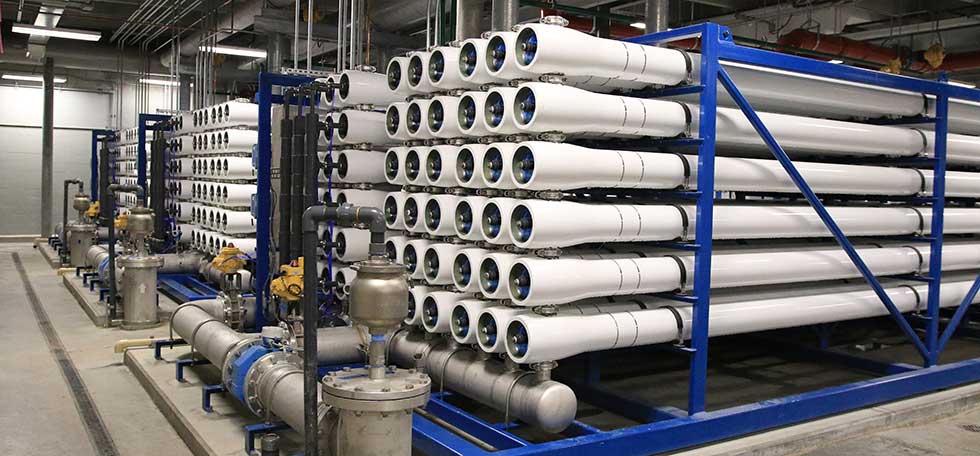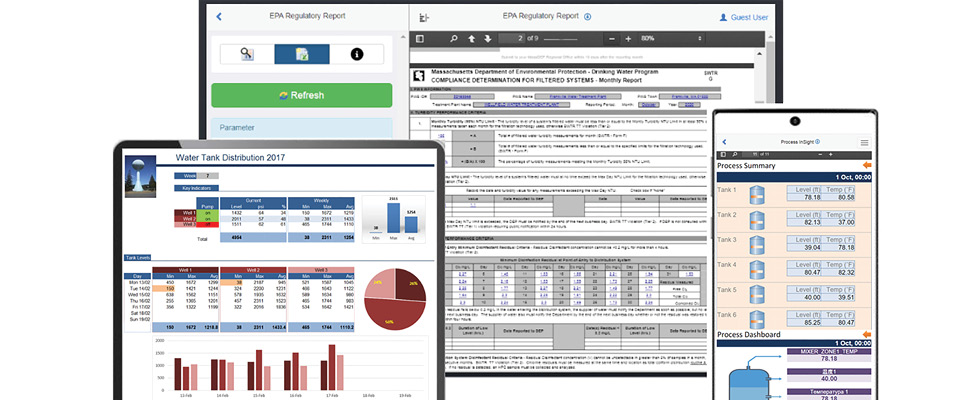
In March 2023, the Environmental Protection Agency (EPA) released the proposed National Primary Drinking Water Regulation Standards (NPDWR) for per- and polyfluoroalkyl substances (PFAS). The regulations were finalized in fall 2023. The NPDWR includes requirements for regulatory limits, monitoring and public notification and treatment. While the ruling has a three-year implementation schedule, since the time for public input has closed and the regulations have recently started, this is the perfect time to break down the new ruling. It is important to also examine the costs and funding sources, ramifications if municipalities exceed the thresholds, how this is playing out amongst industry groups and communities and requirements for monitoring and reporting.
NPDWR Overview
The Safe Drinking Water Act empowers the EPA to set limits on contaminants in public water systems—utilities that serve at
least 15 connections or 25 people or more. Those include 148,000-plus public water systems in the United States that provide drinking water to 90% of residents. This would be the first time the EPA has regulated a new chemical in drinking water since the 1990s.
In spring 2023, the EPA announced its proposal to develop NPDWR for six PFAS. These include perfluorooctanoic acid (PFOA), perfluorooctanesulfonic acid (PFOS), perfluorononanoic acid (PFNA), perfluorobutanesulfonic acid (PFBS), hexafluoropropylene oxide dimer acid (HFPO-DA) (GenX chemicals) and perfluorohexanesulfonic acid (PFHxS). Under this proposal, the EPA establishes maximum contaminant levels (MCLs) for PFOA and PFOS, as well as a combined hazard index for PFNA, PFBS, GenX and PFHxS. The hazard index is a tool used to evaluate health risks of simultaneous exposure to mixtures of related
chemicals. States are now required to have a standard that is no less strict than the NPDWR.
The EPA anticipates the rule will prevent tens of thousands of serious PFAS-attributable illnesses or deaths. The rule establishes the first national standard for PFAS in public water supplies, bringing uniformity to a jumble of state regulations. States where PFAS limits are less stringent than the proposed standards will need to revise them to match or surpass the federal standard. States without any limits must enact their first PFAS drinking water rules.1

of SmartSights)
Public water suppliers must begin testing for the chemicals. The rule proposes MCLs of 4 parts per trillion (ppt) for PFOA and PFOS—the lowest reliable threshold of detection. Those who find more are required to notify the public and upgrade treatment technologies or take other action.
What Is the Cost?
According to EPA estimates, the rule may cost anywhere from $772 million to $1.2 billion to implement each year nationwide, depending on interest rates. But it is anticipated to also deliver $908 million to $1.2 billion in health and economic benefits, including avoided treatment for ailments linked to PFAS. The agency acknowledged a range of uncertainty in estimating costs and benefits.
Industry groups representing water utilities have expressed concerns that the standards exceed the additional funding provided by the agency. The American Water Works Association (AWWA) said the rule requires more than 5,000 water systems to develop new water sources or install advanced treatment technologies. Another 2,500 water systems in states with established standards will need to adjust their existing PFAS treatment systems.
A study released by AWWA2 found the estimated national cost for water systems to install treatment systems to remove PFOA and PFOS to levels required by the EPA would exceed $3.8 billion annually. According to the organization, the majority of treatment costs “will be borne by communities and ratepayers, who are also facing increased costs to address other needs, such as replacing lead service lines, upgrading cybersecurity, replacing aging infrastructure and assuring sustainable water supplies.”3

The EPA has responded to this pushback regarding costs that, thanks to the Bipartisan Infrastructure Law (BIL), water utilities have significant funding options for PFAS treatment, including $4 billion through the Drinking Water State Revolving Fund (DWSRF), $5 billion through the EPA’s Emerging Contaminants in Small or Disadvantaged Communities Grant Program and an additional $12 billion in BIL DWSRF funds for safer drinking water.
Exceeding Thresholds & Real-Time Information
Monitoring is a core component of the NPDWR and ensures water systems are providing necessary public health protections. To that end, the EPA is requiring public water supplies (PWSs) to monitor for PFOA, PFOS, PFHxS, HFPO-DA and ammonium salt, PFNA and PFBS in drinking water, building upon the EPA’s standardized monitoring framework for synthetic organic compounds where the monitoring frequency for any PWS depends on previous monitoring results. This proposal includes flexibilities related to monitoring, including flexibilities for systems to use certain previously collected data to satisfy initial monitoring requirements as well as reduced monitoring requirements in certain circumstances.4
Since the monitoring frequency for any PWS depends on previous monitoring results, analyzing historical data allows operations management to identify patterns, trends and anomalies that may otherwise go unnoticed.
Given the extremely low concentrations deemed acceptable, there are no real-time analytical methods for PFAS. Currently, approved EPA methods of measurement involve the use of solid-phase extraction (SPE) to concentrate the sample, followed by liquid chromatography with tandem mass spectrometry (LC-MS/MS) analysis. This method provides information regarding compound occurrence and concentrations based on multiple lines of evidence,5 and samples are shipped off to a laboratory for analysis. However, there are real-time values that measure the efficiency of the processes that actively remove PFAS. For those plants operating in environments at risk of exceeding the limits, monitoring of such processes becomes more important. New investments in assets like granular activated carbon (GAC) filters, ion exchange and reverse osmosis will require ongoing maintenance and monitoring, which is where real-time monitoring and remote notification can be helpful.
Again, while there currently is not a way to utilize real-time monitoring to check if utilities are exceeding threshold levels, if they know the reverse osmosis system is not operating efficiently, for example, and that system is what reduces PFAS to acceptable levels, then this equipment needs to be checked and more closely monitored.
Reporting
Reports provide a visualization of this historicized process information and correlate related process variables. They then compute metrics on that data and visually graph such data for easier pattern and anomaly detection. These reports are created through third-party software that seamlessly integrates with programmable logic controllers (PLCs), supervisory control and data acquisition (SCADA) and historian systems. Advanced reporting solutions can even pull information from remote alarm notification software, allowing further analysis and optimization of condition response times.
Reporting software enables organizations to turn raw process data into actionable information, thereby increasing efficiency and reducing costs. Furthermore, automated reporting solutions streamline regulatory compliance by collecting data from various sources like SCADA, laboratory information management systems (LIMS) and manual entry. As the data is collected, it is summarized as key metrics—flow totals or turbidity threshold analysis. These advanced reporting solutions
offer templates for compliance, making it easy to populate and publish in the format required by regulatory authorities like the EPA.
Big Impact
Given that PFAS is one of the world’s most intractable pollutants, the EPA’s new regulation prevents future health risks. While complying with the regulation will be challenging, utilizing technology like monitoring and reporting software will help utilities meet the requirements and make a difference in their communities’ drinking water for generations.
References
pbswisconsin.org/news-item/what-epas-nationwide-pfas-rule-means-for-wisconsin-drinking-water
awwa.org/portals/0/awwa/government/ 2023030756bvfinaltechnical
memoradum.pdf
rollcall.com/2023/03/22/utilities-see-new-costs-in-proposed-pfas-water-rule
federalregister.gov/documents/2023/03/29/2023-05471/pfas-national-primary-drinking-water-regulation-rulemaking
sciencedirect.com/science/article/abs/pii/S2214158823000041

